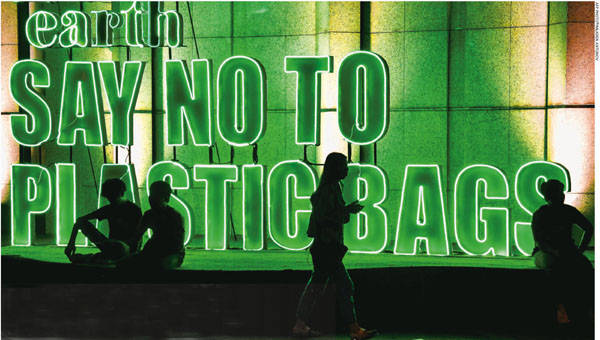MARINE POLLUTION
PLASTICS MENACE
Designed to last for centuries, single-use plastics are damaging Earth’s oceans – Rajika Jayatilake reports

In pursuit of convenience, people do things that seem ridiculous in retrospect. Environmental advocate Roz Savage says: “It can’t be right to manufacture billions of objects that are used for a matter of minutes and then are with us for centuries.”
This is because today, people place greater emphasis on convenience above all else. Life is about instant gratification; a habit that’s deadly for sustaining life on Earth.
No one cares that consumerism is generating mountains of waste. In a world with over 7.7 billion people, the population of the US alone (over 327 million people) generates 262 million tons of municipal waste, according to the US Environmental Protection Agency (EPA) – and over half of it ends up in landfills. Worse still, around 13 percent of it is plastic.
Plastic waste comes mostly from plastic water bottles with a million bottles being sold globally every minute and expected to increase by 20 percent in 2021.
With 1.4 billion people, China has the dubious honour of being the world’s main producer of plastic waste – over 60 million tons in 2010, based on a 2018 report on plastic pollution. However, at the beginning of 2020, China joined a growing movement of over 120 countries that have pledged to ban single-use plastics.
These plastics are designed to be thrown away and range from plastic water bottles, bags, containers and cutlery, to disposable razors and other disposable plastics. It’s an apparent truth that even though most plastic bottles are said to be recyclable, seven out of 10 ultimately end up in a landfill.
Although developed countries are thoughtlessly tossing disposable plastics in the trash, governments in Southeast Asian countries are especially concerned about the devastating environmental impact of plastics.
For instance, among new guidelines issued by Chinese authorities is the prohibition by end 2020 of the import of plastic waste and use of nonbiodegradable plastic bags in major cities. More categories of plastic waste are to be outlawed in Beijing, Shanghai and other affluent coastal provinces of China by the end of 2022, and banned nationwide by late 2025. China has also promised to reach a 35 percent recycling rate across 46 cities in the year ahead.
Several other countries too have woken up to the urgent need to address the hugely adverse environmental impact of disposable plastic products. Plastic trash in the Asia-Pacific region alone costs its tourism, fishing and shipping industries US$ 1.3 billion a year. According to a recent study by scientists from the Helmholtz Centre for Environmental Research in Leipzig, 90 percent of ocean plastic originated from only 10 rivers – eight of which are in Asia.
These negative impacts have led authorities to zero in on the need to contain plastic trash. Thailand recently announced that single-use plastic bags use will be discontinued soon in major stores with a total ban across the country in 2021.
Authorities in Indonesia’s capital Jakarta are gearing up to discontinue single-use plastic bags in department stores, supermarkets and traditional markets in the near term.
A recent study in Malaysia revealed some interesting perceptions of Malaysians on single-use plastic products.
Fifty six percent are concerned about the environmental impact while 70 percent believe the government needs to find effective ways of reducing usage, 59 percent believe replacing plastics with biodegradables is better than banning plastics in daily life and 21 percent say a higher tax on plastics is a good solution to the problem.
Recent research by the Ellen MacArthur Foundation in the UK reveals that every year, between five and 13 million tons of plastic leak into the oceans of the world, and is ingested by sea birds, fish and other organisms.
Head of the marine conservation and campaigning charity Surfers Against Sewage Hugo Tagholm says: “Current science shows that plastics can’t be usefully assimilated into the food chain. When they’re ingested, they carry toxins that work their way onto our dinner plates.”
Scientists at Ghent University in Belgium recently calculated that people who eat seafood ingest up to 11,000 tiny pieces of plastic annually. Last year, the European Food Safety Authority called for urgent research citing increasing concern for human health and food safety “given the potential for microplastic pollution in edible tissues of commercial fish.”
And a report by the World Economic Forum (WEF) states that by 2050, there will be more plastic than fish in the oceans if the world does not heed the situation.
Meanwhile, Malaysia is poised to ‘take the next step toward sustainability’ and has published Malaysia’s Roadmap Towards Zero Single-Use Plastics 2018-2030 with the aim of providing policy direction to all stakeholders.
As French conservationist Jacques Cousteau once said, “water and air, the two essential fluids on which all life depends, have become global garbage cans.”






Leave a comment